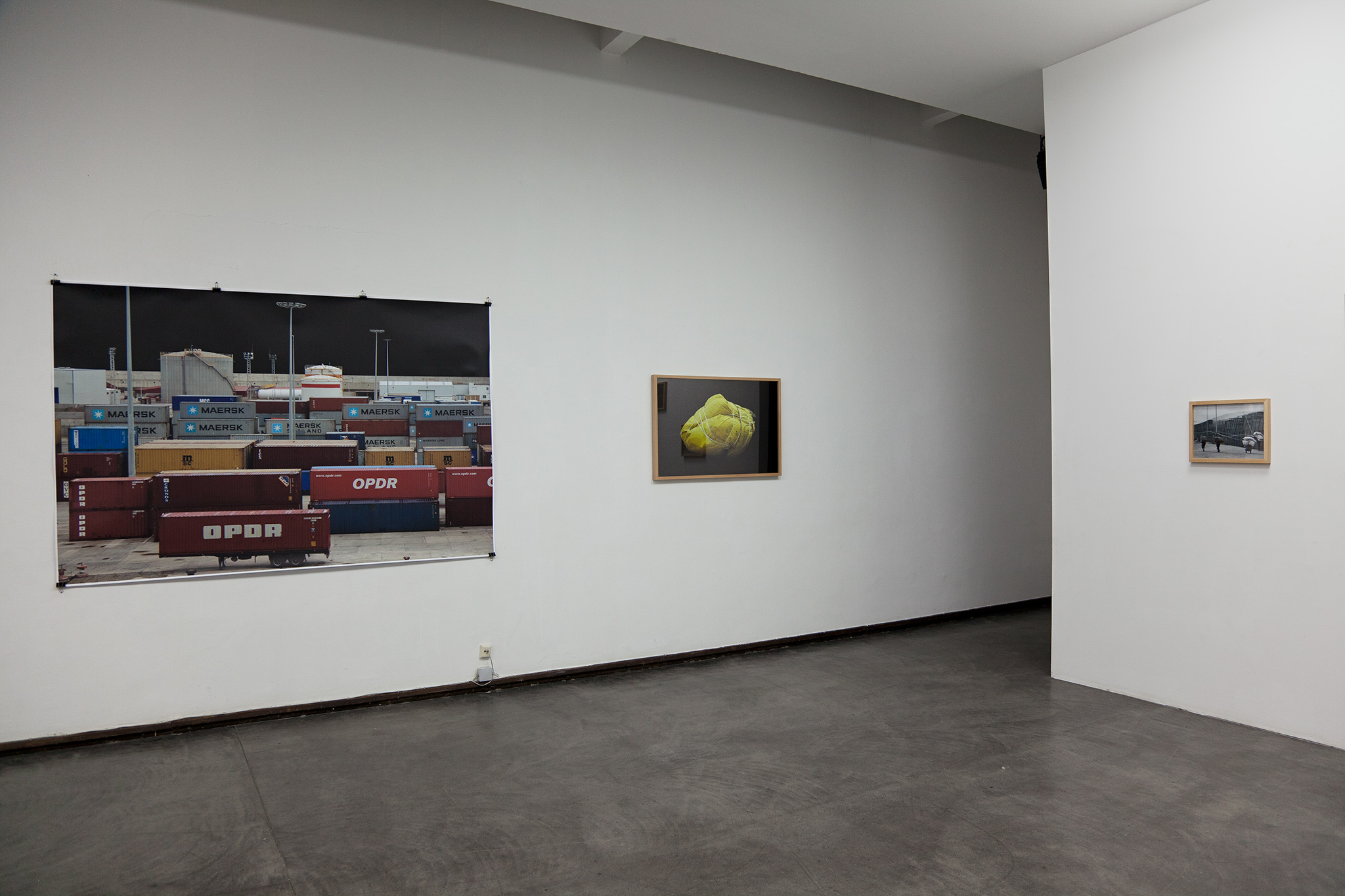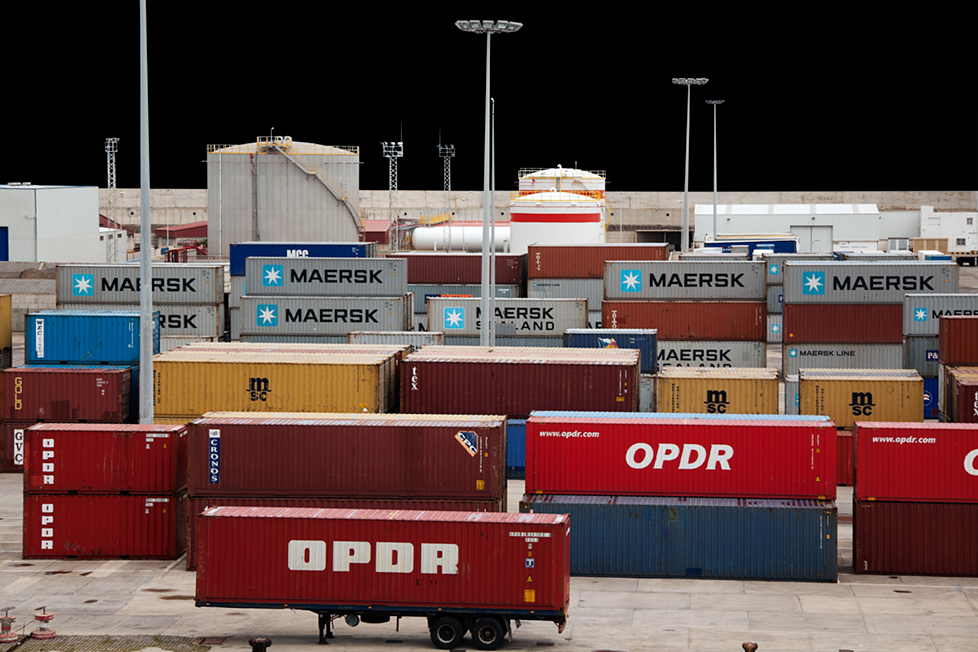ATYPICAL
2013

MMSU – Museum of Modern and Contemporary Art . Rijeka-Croatia
Installation view. Variable mass
2013

Atypical
152×226 cm Digital photograph
2013
Atlas is an artistic project that explores methods or processes related to the global economy and the economy of subsistence, with the dependencies, subordinations and tensions that this generates.The project focuses on the working conditions of many human beings who, forced by the impact of globalization on their social group, have been relegated to the invisibility that this process imposes on them.
The world is in a phase of redefinition; a series of political, strategic, environmental and economic events are accelerating certain global processes. By contrast people coexist with basic needs that act as a driving force worldwide. They are what make up an ‘Atlas’ of struggle, of effort and suffering that travels the planet changing its apparent geography, set apart from regulating borders or states. A world where ‘objectives’ do not rest at any time; one in which every event is recorded by images that overlap, rapidly changing our view of reality, conditioning our perception, requiring us to make an extra effort to comprehend the realities of other social groups, peoples, conflicts or events. A hybrid horizon where all realities and identities meet and are mutually transformed at a transient border. Where the map is dislocated by the impact of a «meteorite» that disintegrates previous geographical paradigms.
This is a new world map configured by migratory movements, transnational labour production, techno-economic connections and precarious employment that often result in post-colonial situations and in a centrist world trade phenomenon. On the new stage of global mobility, that limit of national territory, the border, becomes a permeable membrane, a space for transgression.
Two of these membranes would be the Spanish enclaves of Ceuta and Melilla in Morocco, which extend the concepts of limits and borders due to the special characteristics of these two autonomous cities, as they have inherited a colonial past where economic power relations have persisted over time and are stratified, creating a singular society of subordinations, servitude and contemporary slavery.
In this context a ‘paradise of smuggling’ emerges where women porters meet every day to carry out the same ritual: the transport of goods back and forth across the border, smuggling between the two sides, which unilaterally converts them into human merchandise, representing one of the lowest echelons in the social labour structure of globalization. The search for livelihood calls on them to carry, for a few euros, bales of fifty to eighty kilograms on their backs, a daily transfer or ‘atypical trade’ that moves a lot of money on both sides of the border and produces substantial economic profits for a determined elite. For these women porters, as for many others on the planet, norms and controls acquire a secondary value, as what really matters is survival. Their life and work situations are conditioned by both local and global interests that are beyond their power.
Smuggling, as it has been throughout history and is now in many places, is their economic source of subsistence given their impoverished situation and degree of exclusion. The border is their area of resistance, where a life support system blooms and constructs another ‘globalization’ from below, where links are established between work, inequality of gender, migrations, underground economies, etc. This system generates local circuits connected to the global economy that operate outside of it. The sociologist Saskia Sassen would include this within the «counter-geography of globalization», where women are underpaid, used as a labour force and their rights are not recognized.
This border that joins and divides two continents, is a space of separation that rejects and violates the human rights of many people and forces them into situations of neo-slavery. This paradigm of division and approximation is reinforced every day by the penance or penalty that imposes an unjust system of work, trade and exploitation. We should not forget that borders represent a place of traffic, a changeable, flexible, permeable body that metamorphosizes through the legal or illegal smuggling of people, goods and merchandise. In many cases, they are containers of human suffering that, like a container of goods, bases its nature on a dichotomy, one of «containment» and at the same time paradoxically of mobility.
Along these borders of inequalities, the gap between North and South is probably more evident than any other, since these two enclaves belong geographically to the South, but economically to the North. This is where Africa and Europe stand, in opulence and impoverishment, which gives place to a peculiar socioeconomic reality of interdependences. The social division is latent. Women porters in their state of vulnerability are forced to compete against one another. The economic and social differences of the planet are compressed in the proximities of the border or “border areas”, and in the few square kilometres these two cities occupy.
The “smuggler women” symbolize a tragic existence caught between suffering and force under a load that is too heavy, imposed by a power superior to them, just like the titan Atlas from Greek mythology. Resigned, these women assume their role in the global economy, where the avalanche of information, products or merchandise is infinite; they not only live on the expansion and liberalization of markets, but are also the cheap labour force exploited as the weakest of all, due to their need for subsistence.
The porters in the series of the installation Atlas appear in a neutralized space, a black background that de-contextualises their daily environment, in order to isolate, catalogue, enumerate and document them, with the idea of bringing out their individuality as people. Their activity never ceases to be a human gesture that repeats in time, an oppressive charge bound to poverty, one that we have found in images throughout the history of the art, society, culture and humanity. It is an allegorical, punitive and «superhuman» gesture, that in the digital era survives as an icon and that Aby Warburg, in the early twentieth century, includes in his Atlas Mnemosyne, an image file that was a machine activating ideas, relationships and thoughts exploring the relationship between language and image.
The project Atlas attempts to act as a mechanism of correspondences in the same way, an almanac of images, where the relations between the conceptual, the documentary and the digital construction serve to question the limits of visual representation associated with the idea of reality, without forgetting that the envisioning of the foreign thing, the different, the other one belongs to a series of narratives and dominant global processes.
The allegorical value of Atlas, its visual similarity or proximity to the mythological figure, not only refers to the women porters of the border, but also to many other individuals or social groups that like them resist and carry the weight of the world on their shoulders. In the world of mobility, these stories are devoured by history, and this forms a new ‘human mapping process’, departing from the simple representation of a map, as it cannot be determined by a few two-dimensional lines. These micro-histories are included in the project, which utilizes a hybrid proposal wherein different audio-visual medias coexist, such as photography, video and installation.
The project Atlas constitutes a work in progress, an expandable, transnational and open work of art. Beyond being considered a critical process only, it wants to invite the spectator to reflect on his/her position, because globalization defines us all as potential interdependent ‘consumer’ actors.
